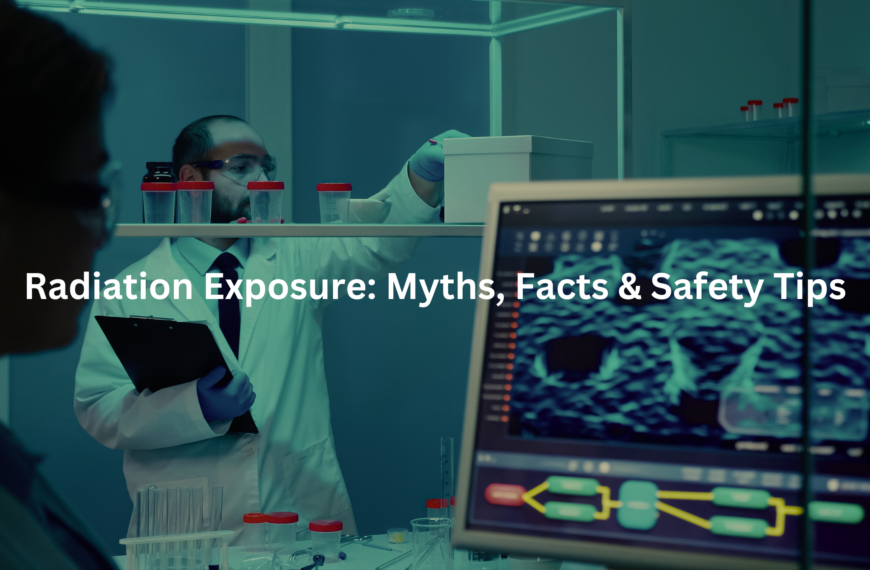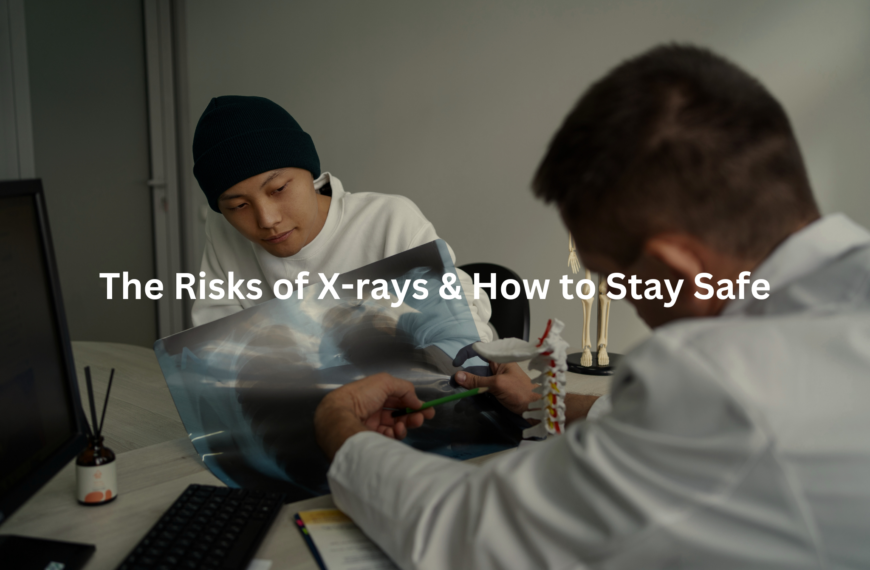Worried about pediatric radiation safety? Learn how to minimise risks and protect children during medical imaging.
Pediatric radiation safety is super important. Have you ever thought about how much care goes into making sure our kids are safe when they need medical imaging? It is vital to protect kids from harmful things like radiation when they need X-rays or CT scans. That’s why learning about pediatric radiation safety is key for us, especially for parents and caregivers. Keep reading if you want to know how we can keep our kids safe!
Key Takeaway
- Kids are more sensitive to radiation than adults, so we need to be careful.
- There are many ways to reduce radiation exposure during imaging.
- Parents should ask doctors about the risks and safety measures for their children.
Understanding Pediatric Radiation Safety
Pediatric radiation safety is all about making sure children are protected when they have medical imaging done. Kids are more vulnerable to radiation than adults. Their bodies are still growing and developing, making them more sensitive to the harmful effects of radiation. Parents often grapple with the risks of medical imaging for children, and it’s not just paranoia. Understanding pediatric radiation safety helps parents.
Doctors and radiologists follow strict protocols to minimise exposure. The ALARA principle—”As Low As Reasonably Achievable”—guides every decision. This means using the smallest radiation dose needed for an accurate diagnosis. Parents should ask whether their child’s scan follows ALARA guidelines. Ensuring medical imaging is done safely can help reduce unnecessary risks. (1)
The ALARA Principle and Its Importance
The ALARA principle sounds technical, but it’s simple: use the lowest possible radiation dose. This is especially important for children, who are more radiosensitive. Their smaller organs absorb more radiation, and because they have longer lifespans ahead, any DNA damage could increase long-term risks.
To apply ALARA, radiologists use multiple techniques:
- Alternative imaging: Whenever possible, doctors use ultrasound or MRI instead of X-rays or CT scans.
- Customised settings: Imaging machines adjust radiation based on a child’s size, avoiding unnecessary exposure.
- Shielding: Lead aprons or thyroid shields protect sensitive areas from stray radiation.
- Fewer images: Taking only the essential scans means less exposure overall.
Parents should ask if non-radiation options exist before agreeing to an X-ray or CT scan.
Radiation Exposure and Its Risks
Radiation exposure sparks concern, and for good reason. Studies show that high doses of ionising radiation increase cancer risk. But what about lower doses, like those from medical imaging?
A chest X-ray gives about 0.1 mSv of radiation—just a little more than what a person gets from natural background radiation in a day. A CT scan, on the other hand, can give anywhere from 1 to 10 mSv, depending on what part of the body is scanned. If a child has multiple CT scans, the radiation can add up over time, which may slightly increase risks.
What does this mean for parents? A single scan is unlikely to cause harm, but it’s best to avoid unnecessary imaging. Doctors carefully consider whether a scan is truly needed before recommending it. (2)
Pediatric Imaging Protocols
Pediatric imaging isn’t just smaller-scale adult imaging—it’s a different approach altogether. Children’s hospitals and radiology clinics follow special protocols:
- Justification before imaging: Every test is evaluated for necessity.
- Optimised exposure settings: Adjustments based on age, weight, and body part.
- Reducing the need for repeat scans: If an image isn’t clear, radiologists use special techniques to improve it before considering another scan. This helps minimise radiation exposure while still getting the details needed for diagnosis.
Parents should feel comfortable asking:
- Is this scan necessary?
- Are there non-radiation alternatives?
- Are pediatric imaging protocols being followed?
Alternative Imaging Methods
Not every diagnosis requires radiation. Some scans use zero radiation, making them preferable when appropriate:
- Ultrasound: Uses sound waves—completely radiation-free. Great for soft tissues, organs, and pregnancy scans.
- MRI: Uses magnets and radio waves. Ideal for brain, spine, and joint imaging.
- Low-dose X-ray techniques: When X-rays are necessary, newer digital methods reduce radiation levels.
Radiologists consider these options first, choosing radiation-based scans only when absolutely needed.
Communicating Risks with Parents
Parents often hesitate when a doctor orders a scan. That’s normal. Medical professionals should clearly explain:
- Why the test is necessary
- What the radiation dose will be
- What precautions are in place
- Whether safer alternatives exist
Educational pamphlets, online resources, and direct conversations help parents make informed decisions. A doctor who takes time to explain imaging risks and benefits helps ease anxiety. (3)
Keeping Up with Technology
Radiation safety isn’t static—new advancements continually reduce risks. Hospitals now use:
- Low-dose CT scanners that deliver the same image quality with less radiation.
- Dose-tracking software to monitor cumulative radiation exposure.
- AI-enhanced imaging that reconstructs high-quality images from lower doses.
As technology improves, radiation exposure in pediatric imaging continues to drop.
Educational Resources for Parents
Parents don’t need a radiology degree to understand imaging safety. Many organisations provide easy-to-read resources:
- Australian Radiation Protection and Nuclear Safety Agency (ARPANSA)
- Image Gently Campaign (global movement for safer pediatric imaging)
- Local hospital websites with FAQs on radiation safety
Being informed helps parents advocate for safer imaging choices.
Quality Assurance in Pediatric Radiology
Credit: Air Techniques
Behind the scenes, hospitals perform routine checks to maintain imaging safety. Quality assurance measures include:
- Regular equipment calibration to ensure minimal radiation exposure.
- Radiation safety officers who oversee imaging protocols.
- Continuous staff training to stay updated on the latest safety techniques.
This ongoing quality control ensures children receive safe and effective imaging.
Practical Advice for Parents
What can parents do?
- Ask questions. What’s the radiation dose? Is there a lower-dose alternative?
- Keep track. Maintain a record of your child’s imaging history.
- Choose accredited facilities. Pediatric-trained radiologists follow stricter safety measures.
- Advocate for ALARA. Make sure imaging is justified and done at the lowest dose possible.
Radiologists work hard to balance diagnostic accuracy with safety. By understanding pediatric radiation risks and safety measures, parents can confidently make the best decisions for their children.
FAQ
How does pediatric radiation safety protect children during diagnostic imaging?
Pediatric radiation safety focuses on lowering radiation exposure in radiological examinations for children. Kids are more sensitive to ionizing radiation, so hospitals follow pediatric imaging protocols to reduce risk. The ALARA principle guides doctors to use the lowest possible dose while getting clear images.
They also apply shielding techniques, adjust machine settings for smaller bodies, and consider non-radiation options like pediatric ultrasound use or MRI safety in children whenever possible.
What are the risks of CT scan risks for children, and how is exposure managed?
CT scan risks include increased radiation exposure, which can raise the radiation-induced cancer risk later in life. To manage this, hospitals use pediatric dose reduction techniques, like adjusting machine settings for body size, and follow dose reference levels in pediatric imaging.
Radiologists also rely on radiation dose monitoring and radiation exposure assessment tools to track cumulative exposure. Parents can ask about risk-benefit analysis in pediatric imaging before a scan.
How do doctors follow the ALARA principle in pediatric radiology guidelines?
The ALARA principle means keeping radiation as low as reasonably achievable. In pediatric radiology guidelines, this involves using best practices for minimizing exposure, including dose optimization strategies, precise patient positioning for optimal safety, and alternative tests like innovative imaging alternatives to X-rays.
Institutions also ensure imaging equipment calibration for pediatrics and provide training for pediatric radiologists to enhance safety.
What role does a radiation safety officer play in pediatric patient care?
A radiation safety officer ensures that imaging departments follow strict safety measures in medical imaging. Their job includes overseeing exposure assessment protocols, maintaining quality assurance in pediatric radiology, and enforcing institutional policies on pediatric imaging. They also work with medical physicist responsibilities to check machine accuracy, refine pediatric radiography techniques, and improve screening protocols for children.
How can parents improve their parental understanding of radiation risks?
Parents should ask about radiation protection, available alternatives, and whether their child’s scan follows pediatric diagnostic imaging standards. Resources from campaigns like Image Gently campaign can help clarify risk communication with parents. Hospitals also provide educational resources for parents, ensuring families understand pediatric health outcomes related to radiation. Always discuss any concerns with your child’s doctor.
Conclusion
In conclusion, pediatric radiation safety is so important for protecting our children during medical imaging. By understanding the risks, using the ALARA principle, and following protocols, we can help minimize exposure. Parents have a big role in this by asking questions and staying informed. Keeping kids safe is a team effort!
References
- https://pmc.ncbi.nlm.nih.gov/articles/PMC3132617/
- https://www.radiologyinfo.org/en/info/safety-rad-children
- https://www.iaea.org/publications/8727/radiation-protection-in-paediatric-radiology



